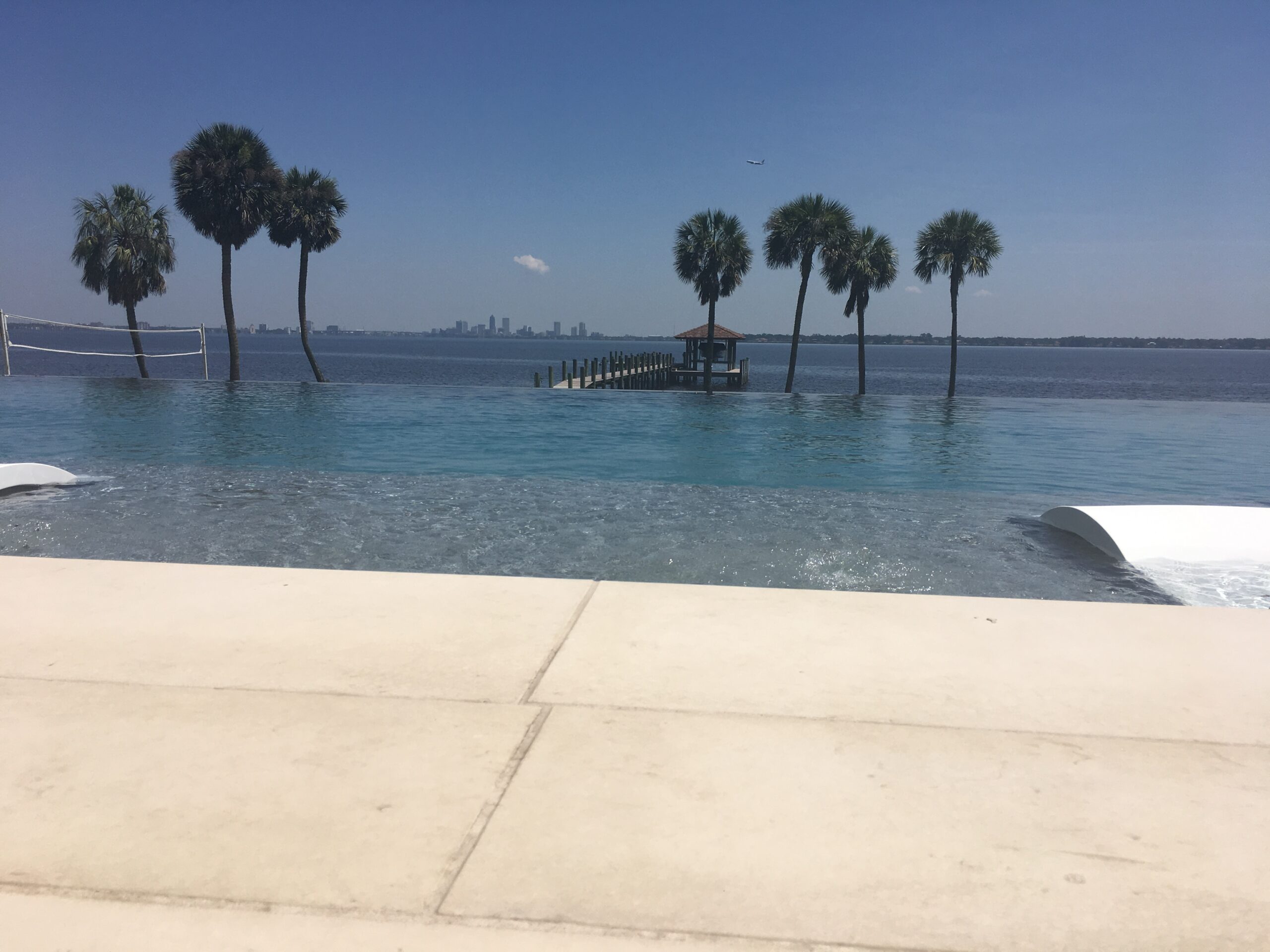Vanishing Edge. Infinity Edge. Zero Edge. Negative Edge. Overflow Edge. Perimeter Overflow. Slot Overflow. The lexicon of swimming pool water features is as diverse as the designs themselves. Despite the array of terminology, they all encapsulate the concept of “water in transit” design elements. Simply put, these features involve the movement of water from one body to another to achieve a desired effect. An often-underappreciated example of this concept is the spillover spa adjacent to a swimming pool, where water is pumped from the pool into the spa, causing it to overflow and cascade back into the pool.
Delving deeper into the realm of advanced water in transit designs, we find a myriad of aesthetics and hydraulic schematics. However, the fundamental principle remains consistent: redirecting water from one source to another to alter the water level and enhance the visual appeal of the vessel. Vanishing edge pools, for instance, typically feature one or more sides constructed at or slightly above the normal waterline elevation of the pool design.
The process involves pumping water from a catch basin or remotely located surge tank into the pool or spa, causing the waterline to rise slightly and initiate an overflow. Subsequently, the overflowing water is captured in the basin or tank and circulated back to the pool to maintain the illusion of the “vanishing” edge. While this explanation provides a simplified overview, the construction of such features can be highly intricate and should only be entrusted to experienced and qualified swimming pool contractors.
One common question that arises is whether an infinity edge pool would suit a particular setting. The answer is not straightforward, as water in transit features can be visually striking in various environments if carefully designed. Remarkable projects have been executed on flat job sites, challenging the notion that such features are reserved for hillside, oceanfront, or lakeside installations. What truly matters is understanding the client’s expectations, considering factors such as lines of sight, existing topography, architectural elements, and the backdrop of the project.

Undoubtedly, vanishing edge style pools and water in transit design elements add a “wow” factor to any project. However, they also entail increased complexity in engineering and construction compared to traditional backyard pools. Factors such as evaporative water loss, intricate plumbing and hydraulic systems, prolonged construction timelines, and elevated costs are inherent to these features. While there’s no universal method for estimating budget increases, vanishing edge style features typically add $30,000 to $100,000 or more to a project, depending on its scale and complexity.
The expertise, experience, and training required for executing such projects are substantial. Despite simplifying the concept of “How an Infinity Pool Works,” these pools are far from simple in practice. There exist countless design possibilities for integrating water in transit elements into swimming pool projects, all of which necessitate the involvement of experienced designers and contractors.
If the discussion on infinity edge pools ignites your curiosity or raises questions about your pool project, we encourage you to reach out to us! The Southern Outdoor Spaces team comprises pool experts eager to share their knowledge and assist you in realizing your dream backyard space. Contact us today to initiate a conversation and embark on your journey toward a breathtaking outdoor oasis.
